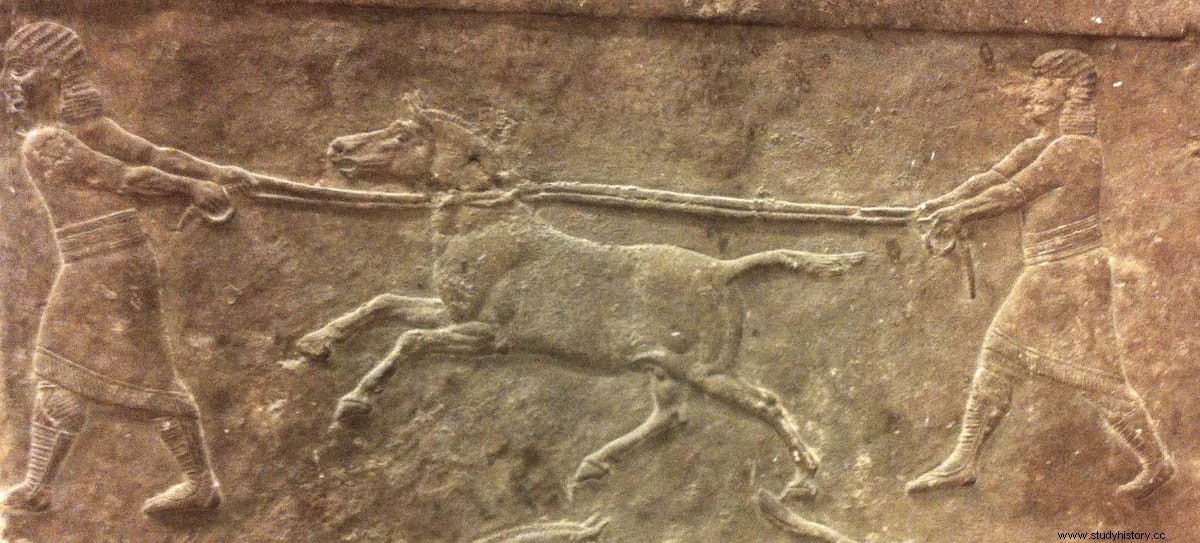4,500-year-old iconography and texts from Mesopotamia show that equids were used by the elite for travel and warfare; however, the nature of these animals remained a mystery.
In Science Advances A team from the Jacques Monod Institute (CNRS/University of Paris) used ancient DNA to show that these animals were the result of crossbreeding domestic donkeys with wild donkeys.
This makes them the oldest known example of animal hybrids, which were produced by Syro-Mesopotamian societies 500 years before the arrival of domestic horses in the region.
Equidae have played a fundamental role in the evolution of warfare throughout history. Although domesticated horses did not appear in the Fertile Crescent until about 4,000 years ago, four-wheeled equine-drawn war chariots had been used on the battlefield by the Sumerians for centuries, as evidenced by the famous Banner of Ur, a Sumerian mosaic of 4,500 years old.
Cuneiform clay tablets from this period also mention prestigious equids of great commercial value called kunga; however, the exact nature of this animal has been the subject of controversy for decades.

A team of paleogeneticists from the Jacques Monod Institute (CNRS/University of Paris) has addressed this issue by studying the 4,500-year-old equine genomes from the princely funerary complex of Umm el-Marra (northern Syria). Based on morphological and archaeological criteria, these animals, buried in separate facilities, have been proposed as the prestigious kungas by an archaeozoologist from the United States.
Although degraded, the genome of these animals has been compared with that of other equids:horses, domestic donkeys and wild asses of the equus hemionus family. , specially sequenced for this study. The latter includes the remains of an 11,000-year-old equid from the oldest known temple, Göbekli Tepe (in southeastern present-day Turkey), and the last representatives of Syrian wild asses that disappeared in the early 20th century.
According to the analyses, the Umm el-Marra equids are first-generation hybrids resulting from the crossing of a domestic donkey and a male hemion. As the kungas were sterile and the hemiones were wild, it was necessary to breed a domestic female each time with a previously captured hemion (capture depicted on an Assyrian bas-relief from Nineveh).
Instead of domesticating the wild horses that populated the region, the Sumerians produced and used hybrids, combining the qualities of the two parents to produce offspring stronger and faster than donkeys (and much faster than horses) but more controllable than donkeys. hemions. These kungas were eventually supplanted by the arrival of the easier-to-breed domestic horse, when it was imported into the region from the Pontic steppe.
